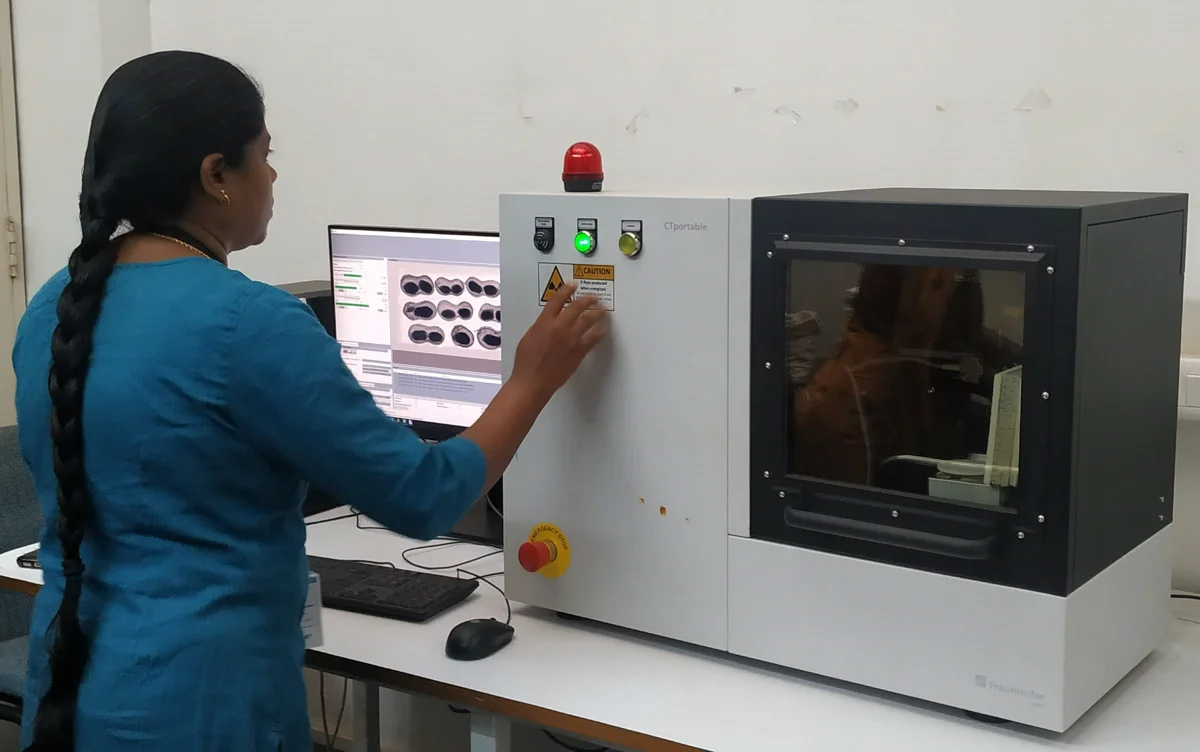Wednesday, 3 December 2025

The study led by a team of researchers from the International Crops Research Institute for the Semi-Arid Tropics (ICRISAT) and the Fraunhofer Development Center for X-ray Technology (EZRT) demonstrated the potential of X-ray radiography for a rapid and non-destructive determination of key market-related traits from X-ray scans of peanuts while still inside the hull.
Dr Stefan Gerth, Head of Department, EZRT said, “ICRISAT crop researchers pointed to the important gaps frequently restraining the Indian farmers from reaping the benefits of their hard labor, and researchers from rapid breeding of improved crops. The collaboration helped us to adapt our technology so that the gaps can be closed.” As a result, the peanut pods evaluation process has become more time and labor efficient. What took three-five skilled workers 30 minutes can now be done by a single technician in two minutes.
This enables the accurate and timely evaluation of the peanut pods for important market-related characteristics like kernel weight or shelling percentage from the X-ray scan of whole unshelled peanut pods.The computer tomography (CT)-system enabling such analysis is available at ICRISAT headquarters in Hyderabad, India. Dr Sunita Choudhary, Scientist, Crop Physiology and Modelling, Accelerated Crop Improvement Program, ICRISAT said that the use of X-ray based technology can revolutionize agriculture research, which has been relying on age-old manual methods or time-consuming laboratory testing methods for determining crop post-harvest traits.
Technology-driven crop evaluation and value-chains
The processing algorithms that allow ‘virtual shelling’ is also being explored for feature evaluation of various other crops such as rice, oats and barley, and pigeonpea for estimation of other commercially significant traits like milling recovery.
“We are also exploring the usage of X-ray radiography and tomography–based methods for testing seed embryo viability. In gene banks, a large number of precious seed samples need to undergo germination tests to check the seed viability every few years,” said Dr Sunita Choudhary, Scientist, Crop Physiology and Modelling, Accelerated Crop Improvement Program, ICRISAT.
This study has shown that X-ray radiography has the potential to be the right technology for in-field evaluation of farmers’ produce which the International Committee for Food Value and Safety calls for.
This study has shown that X-ray radiography has the potential to be the right technology for in-field evaluation of farmers’ produce which the International Committee for Food Value and Safety calls for.
A portable X-ray imaging system will be especially useful in grain value chains where the time needed to assess the economic value of grain by threshing or milling is a significant barrier. ICRISAT and EZRT will work together to facilitate the necessary tech transformation of such grain value chains in the near future.
“Substituting the manual procurement methods with the use of suitable technology could standardize and accelerate the procurement process in the future. It also allows fair procurement cost estimation for the primary producers and all stakeholders across the value chain” said Dr Jana Kholova, Cluster Leader Crop Physiology and Modelling, ICRISAT.